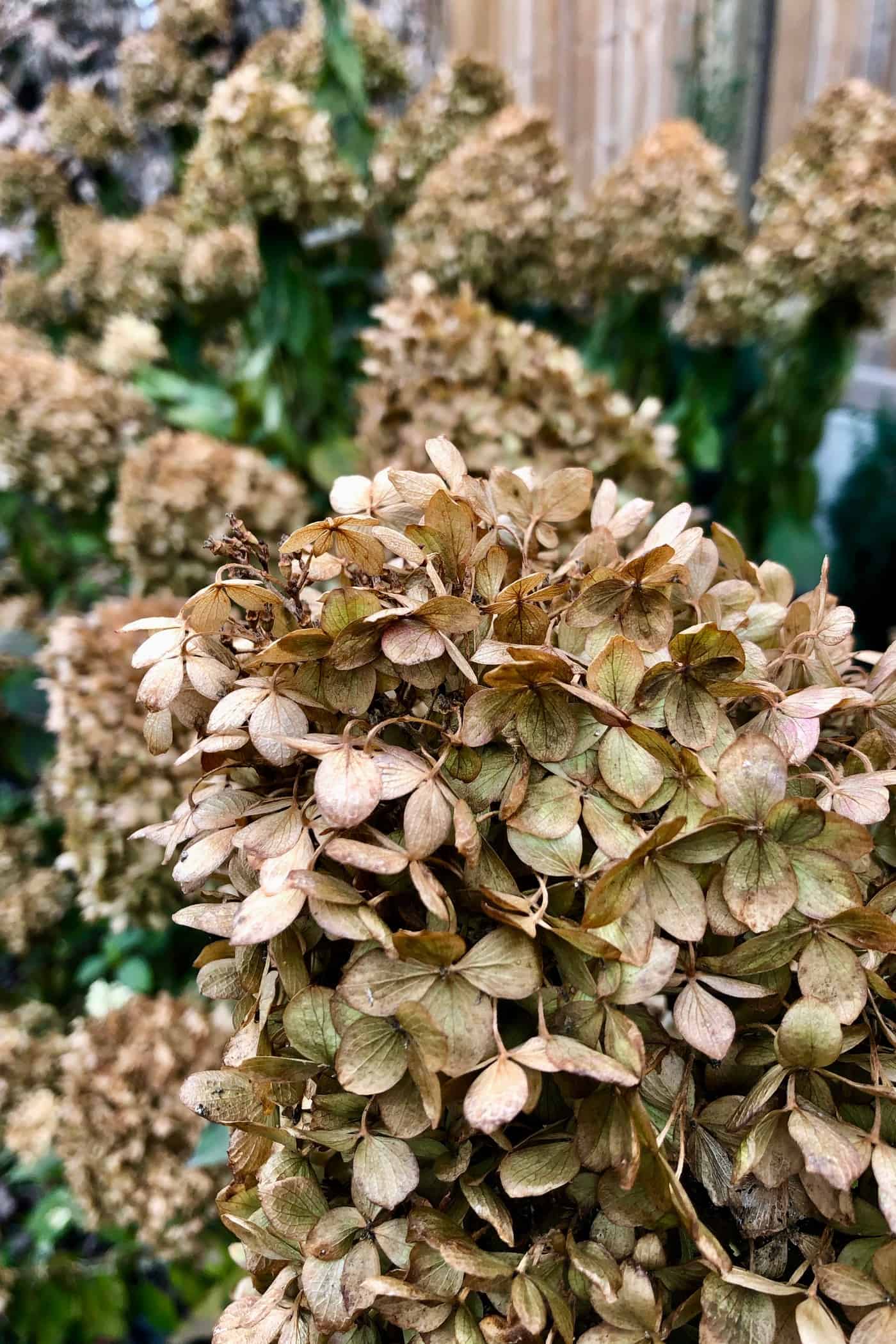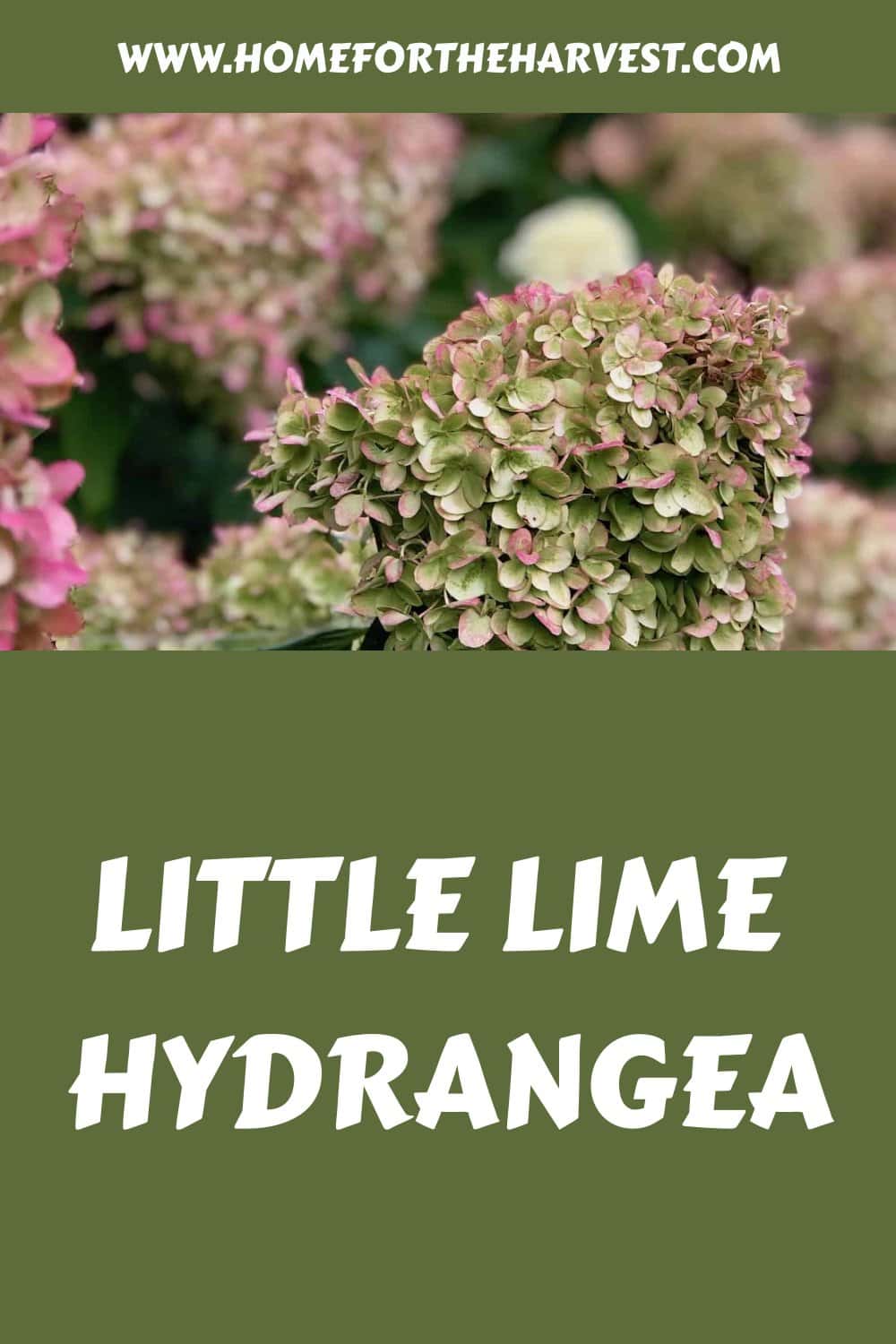Little Lime packs a lot of flower power into a small space! Fortunately, these hardy hydrangeas are among the easiest to care for. Here’s how to care for Little Lime hydrangeas in the garden.
Here are the key steps to Little Lime hydrangea care:
- Plant in a wide hole that’s only as deep as the soil in the pot.
- Mulch the surrounding soil with organic mulch.
- Keep the mulch 6” from the stems at all times.
- Water regularly during the growing season for evenly moist soil.
- Remove any dead, damaged, or diseased stems whenever observed.
- Deadhead the flowers if they flop over or after the first frost.
- Prune Little Lime in late fall/early spring while dormant.
- Apply a slow-release organic fertilizer in early spring.
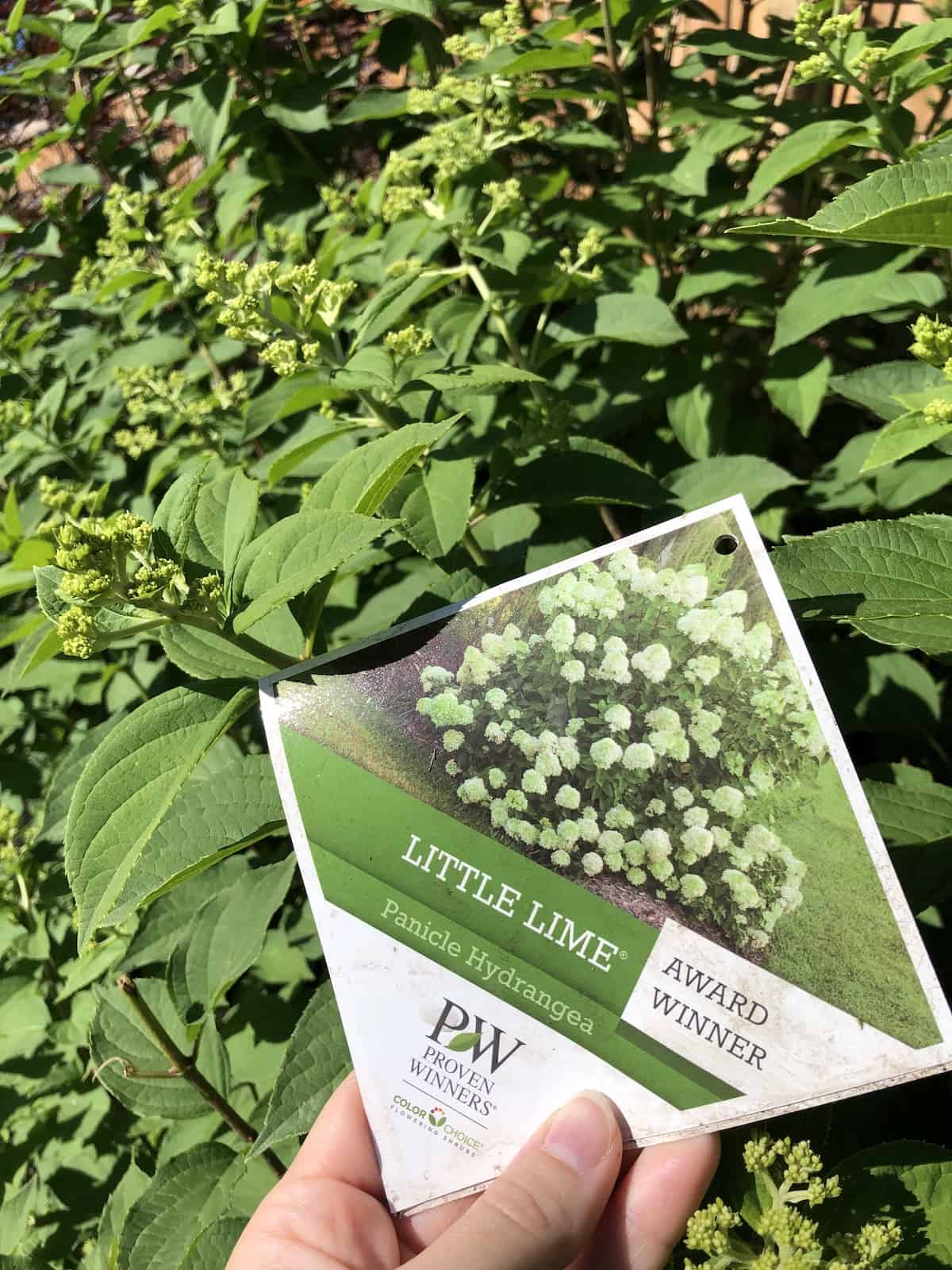
How to care for little lime hydrangea
Caring for Little Lime hydrangea plants involves deep watering, mulching, removing dead flowers, and light pruning. Maintenance of Little Lime is relatively low in comparison to other hardy hydrangeas. These deciduous shrubs produce quite a few flowers, given their small size.
Care is relatively simple, given their tolerance to cold temperatures, drought, and disease. Hardy hydrangeas like Little Lime are cold-hardy down to zone 3 and can generally be grown comfortably in zones 3-8.
Little Lime hydrangea shrubs appreciate sunlight and do best in full sun or partial sun. Little Lime is not a shade-loving hydrangea. Filtered sun to full sun is best!
Little Limes like a consistently moist soil environment throughout the growing season. These hydrangeas don’t like soil saturated with water, but they prefer moist soil to dry soil. Use a drip irrigation line to keep the soil moisture steady all summer. If not using a drip line, hand water regularly (at least weekly) to maintain soil moisture.
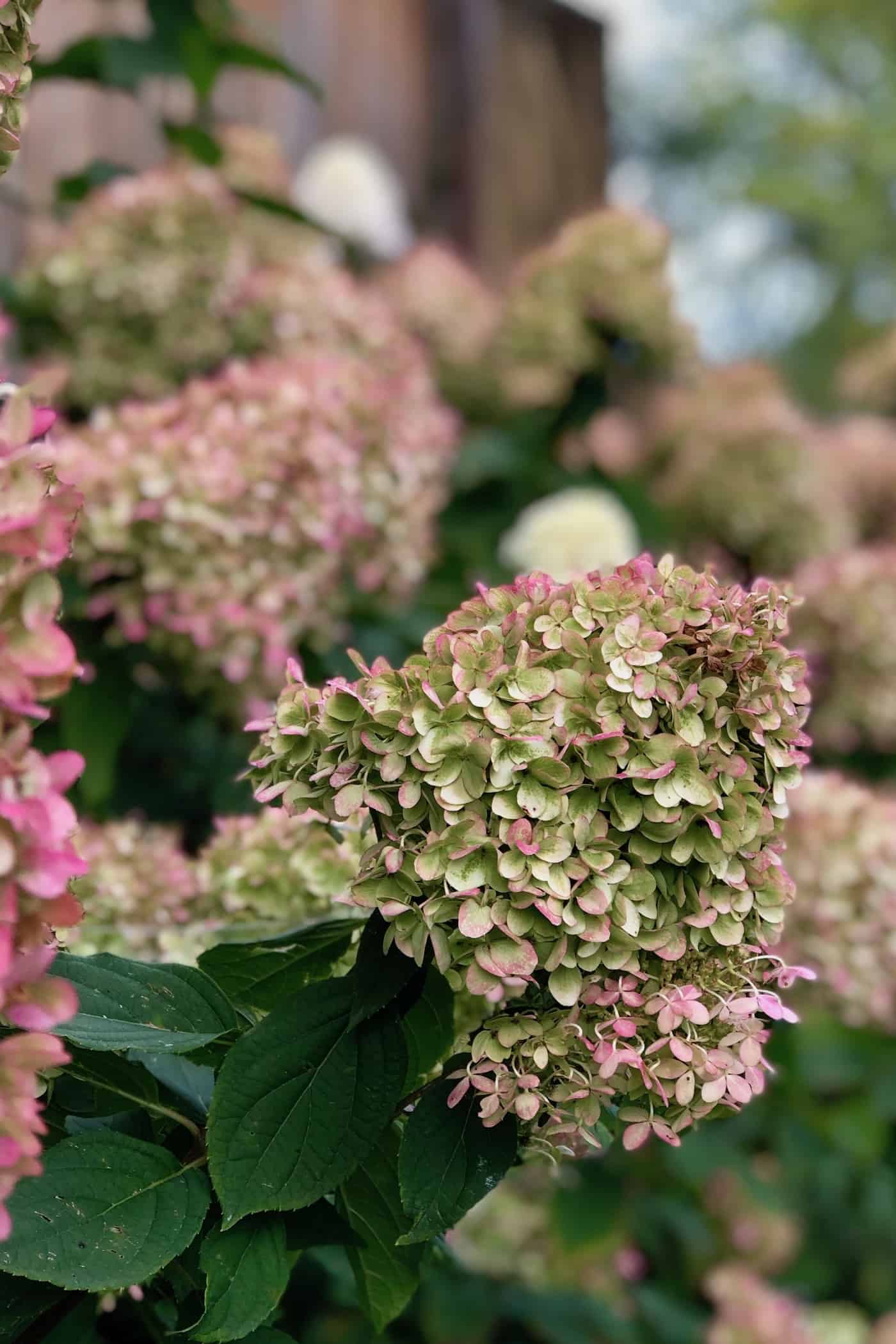
Planting little lime flowering hydrangea shrubs
Little Lime Hydrangea care starts with planting the shrub properly. These plants can be found at most nurseries and garden centers, or you can order Little Lime shrubs online.
Dig a wide hole for the shrub, perhaps twice as wide as the pot the shrub is sold in. The hole should not be too deep, though. The hole should be no deeper than the soil in the plant pot. The soil around the base of the shrub should be the same level as the surrounding ground after the Little Lime has been planted.
Mulch is a key part of success in the landscape. A good organic mulch keeps moisture in the soil. The roots of this shrub appreciate steady, consistent moisture throughout the growing season. Mulch is very helpful in moderating the heat from the sun as well as drying cold winds. I use an OMRI-listed organic compost as mulch for my Little Lime shrubs.
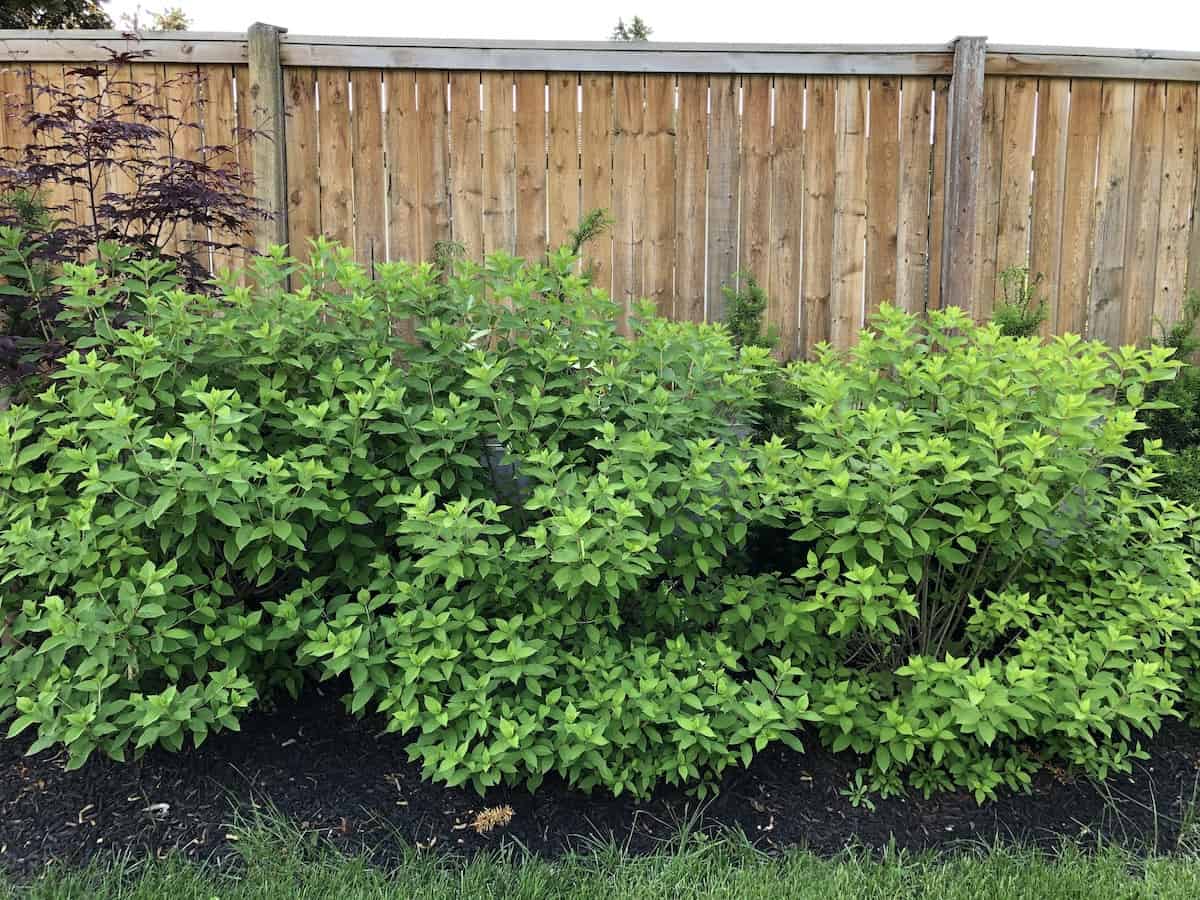
Little lime hydrangea pruning
Little Lime Hydrangeas require minimal pruning. These hydrangeas are bred to be compact, generally growing to a size of 3-5 feet tall by 3-5 feet wide. Pruning is generally not required for the first 2-3 years while the plants become established. Little Lime bushes are generally nicely rounded and may not ever require pruning for size if planted in a location where they can grow to their full mature size in shrub form.
Once the young shrubs have become established, they can be pruned while dormant to increase air circulation and to shape them. See the video and instructions below for details.
When to prune little lime hydrangea
Prune Little Lime Hydrangea in late winter or early spring, preferably while the shrub is dormant. Pruning at the start of the growing season encourages the growth of stems and flower buds. The best time to prune Little Lime shrubs is just as the snow has melted. The shrubs are still dormant, but it’s warm enough to be out in the garden.
Deadheading Little Lime Hydrangea flowers can be done at any time. Stems that are dead, damaged, or diseased should also be removed throughout the year at the time they are observed. Hard pruning for shape and size should be done in late winter or early spring, although this shrub is rather tolerant of out-of-season pruning.
Little Lime Hydrangeas bloom on newly-grown wood. Flower buds are developed in spring. Little Lime Hydrangea flowers grow each summer on the fresh green stems that appear in the spring. Because it blooms on new wood, this flowering shrub can be pruned in the late winter or early spring without fear of reducing summer flowers. The pre-season pruning will stimulate the growth of the stems that will bloom in the summer.
These hydrangeas are also somewhat tolerant of pruning at less-than-ideal times of year. Pruning Little Lime Hydrangea in the summer will result in fewer blooms that year. Hard fall pruning of these hydrangeas is not recommended until they are entering dormancy. Hard pruning stimulates growth, which is the opposite of what we want the shrub to do in the fall. Deadhead the flowers after the first frost and remove any dead/damaged/diseased stems, but save the true pruning until the hydrangea is dormant.
How to prune little lime hydrangea
Little Lime Hydrangea is best pruned back in late fall or early spring (while it is dormant for the cold season). Pruning these shrubs isn’t strictly necessary, but shortening the main stems does encourage them to grow stronger and create a fuller shrub, as well as better blooming. Little Lime will survive being cut back to the ground, but most gardeners choose simply to reduce the length of the stems prior to the growing season to encourage strong permanent stems and lots of blooms.
Start pruning your Little Lime Hydrangea by removing any branches that are dead, diseased, dying, or otherwise damaged. I like to remove them right down to the base of the plant to keep the branch structure of the base relatively open for air circulation. Then move on to removing branches that are crossing other branches (especially if they are rubbing). You can also remove any branches that are growing inwards towards the center of the shrub. There should now be fewer main branches as some have been removed right down to the ground.
Cut each remaining stem of the Little Lime Hydrangea back by 1/3 the total height. For instance, a 3’ tall Little Lime should be cut back to 2′ tall. A larger 5′ tall shrub can be cut back to about 3′ 4″ tall. The bare permanent base of the shrub should now be visible (the trimmed main stems that go right to the ground).
Little Lime Hydrangea shrubs put on a substantial amount of new growth each spring. Remember that they flower on freshly grown green wood, so make sure you’re cutting back the branches to a main stem so that the shrub can send out new green flowering shoots. Dead, Damaged, or Diseased stems should be removed completely whenever observed (any time during the year).
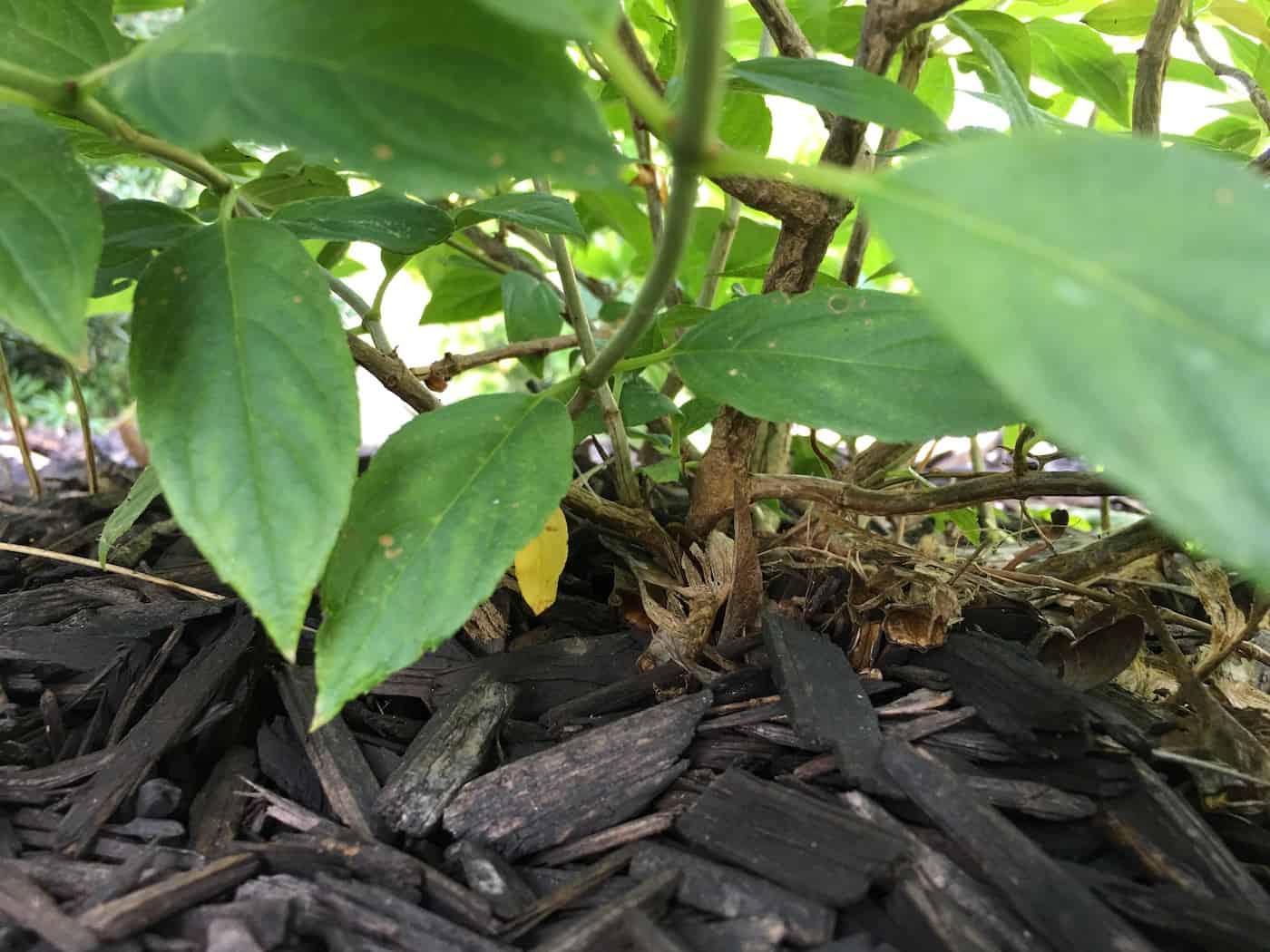
How to mulch little lime hydrangea shrubs
I like to mulch with homemade organic compost or high-quality landscape mulch made from plant material. While adding mulch, remember that mulch should never actually touch the base of any shrub. Don’t even place mulch within 6” of the woody stem base. The plant will fill in so fast it will cover the area. Don’t worry about the un-mulched ring right around the base – it’s not worth covering that spot with mulch!
Mulch touching the base creates a moist, cozy environment for harmful micro-organisms. The stems have developed to thrive with good airflow, not with moist, trapped air. Keep the mulch 6” from the stems of the Little Lime Hydrangea as it grows. Regularly pull back any mulch that makes its way to the base of the plant.
How and when to fertilize little lime hydrangeas
Early spring is the best time to fertilize Little Lime Hydrangea. Apply a slow-release balanced organic fertilizer to the surrounding soil in early spring as the plant is coming out of dormancy. A smaller feeding in mid-summer can be helpful in some environments. The pH of the fertilizer does not change the color of the flowers. Here are some excellent hydrangea fertilizers to choose from.
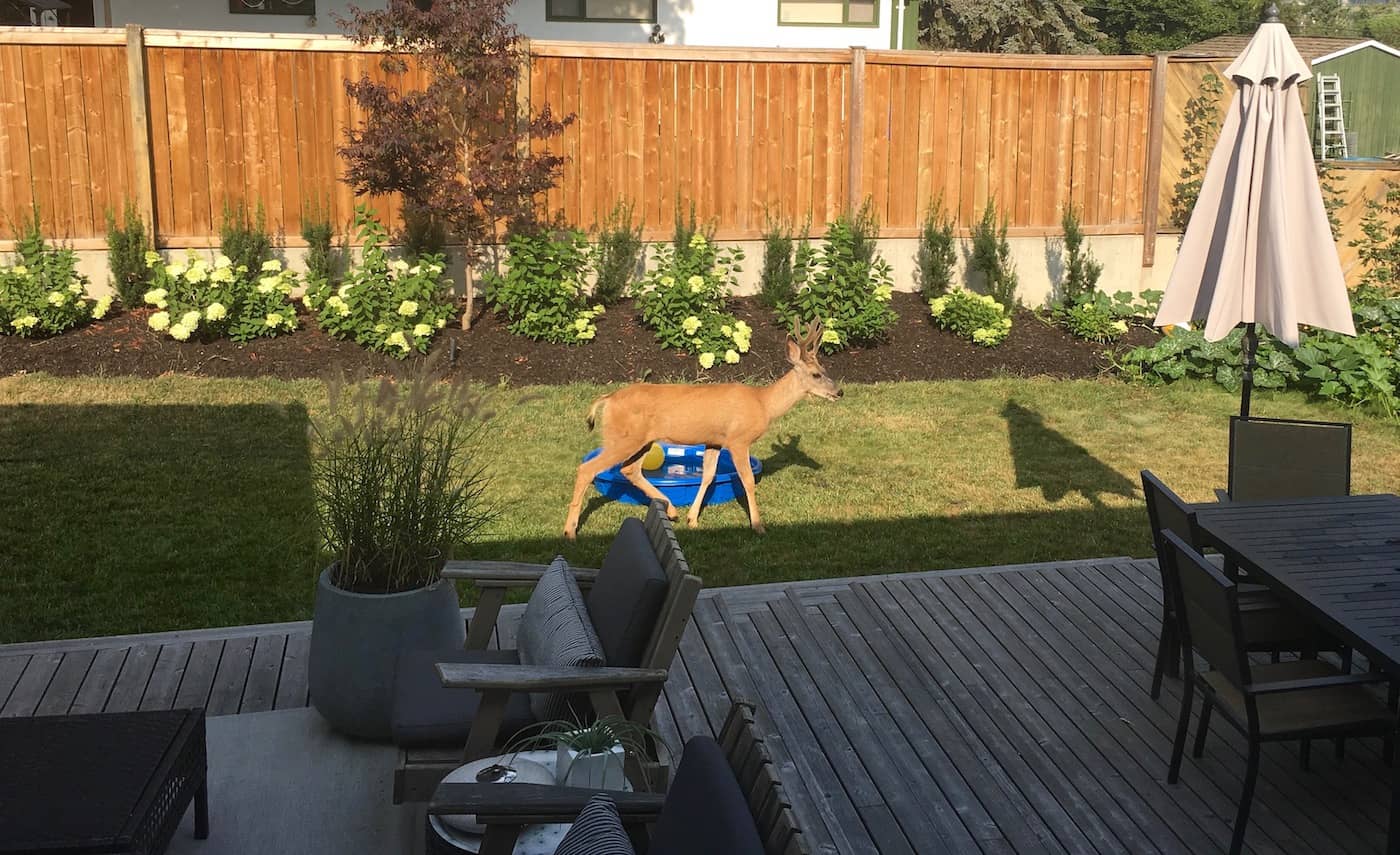
Garden design with little lime hydrangea
Little Lime Hydrangea makes a lovely compact flowering statement plant. They’re also quite easy to care for (even in mass plantings). Here are some great uses for Little Lime in garden design:
- Borders
- Containers
- Cutting Garden
- Hedge
- Foundation Planting
- Woodland Garden
For a Little Lime Hydrangea hedge, plant the shrubs 36-60 inches apart (3-5 feet).
The mature size of little lime hydrangea
So, how big do Little Lime Hydrangeas get? Little Lime Hydrangea shrubs can reach 5 feet tall and 5 feet wide at maturity. Given variations in growing conditions, an individual plant might only reach 3-5 feet tall and wide when fully grown. These dwarf hydrangeas are about one-third of the size of other hardy hydrangeas and therefore require less pruning to keep them small.
The blooms of little lime hydrangea
Little Lime Hydrangea grows lots of lovely cone-shaped flowers with little care or
The stems of Little Lime flowers are very sturdy, making these flowers great for a cutting garden. The flowers aren’t terribly big and are easy to work with in flower arrangements. Little Lime Hydrangea flowers can also be dried and saved for year-round flower arrangements or special holiday decor.
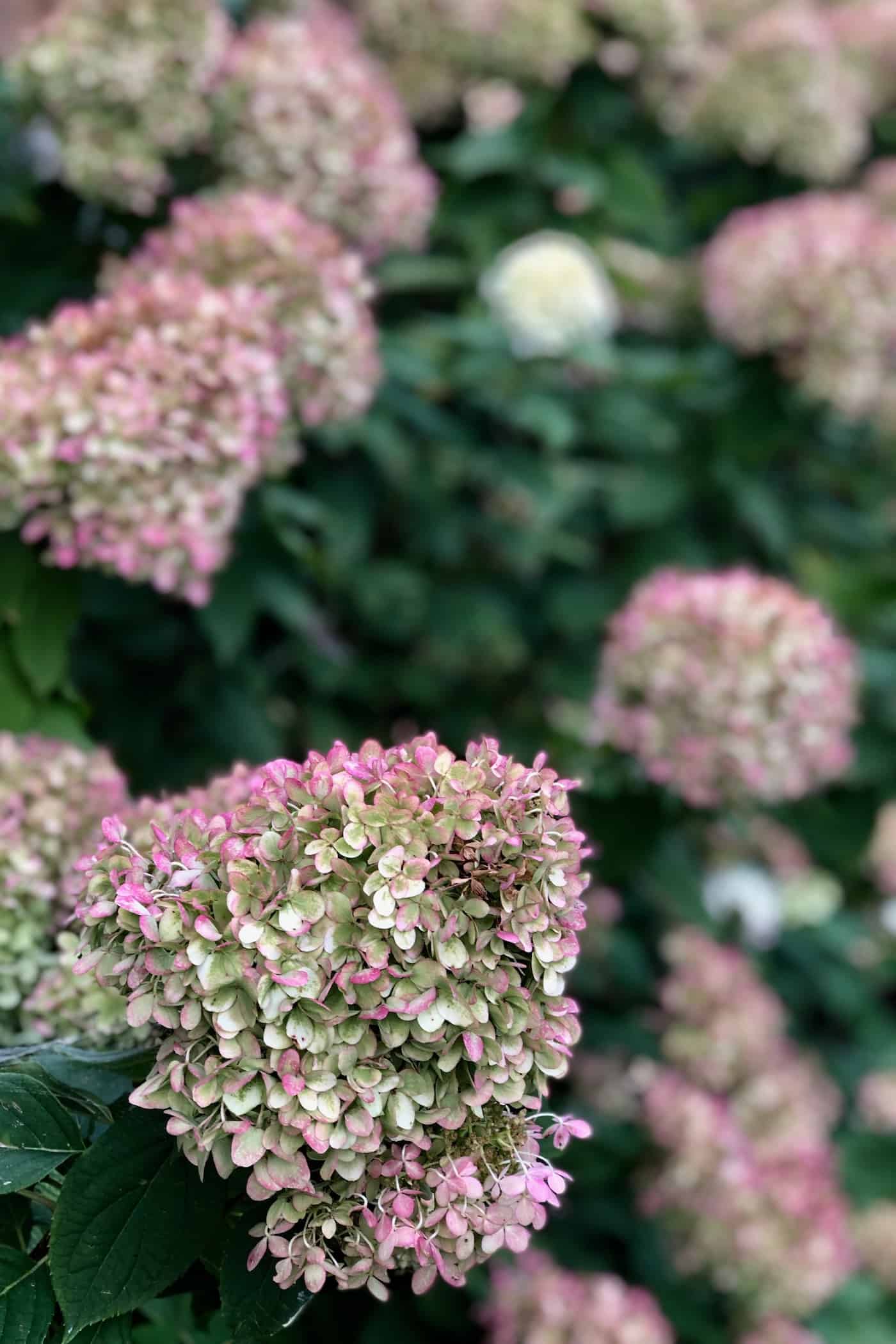
Companion plants for little lime hydrangea
Little Lime Hydrangea is very versatile and tolerant of many other plants. Here are some potential companion plants for Little Lime:
Trees:
- Dogwood
- Hornbeam
- Chanticleer Pear
- Maple
Shrubs:
- Boxwood
- Yew
- Shrub Rose
- Viburnum
Perennials:
- Astilbe
- Lavender
- Coral Bells
- Peonies
- Lilies
